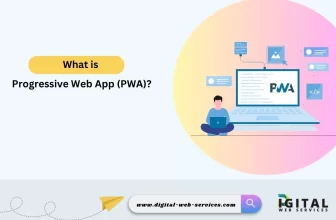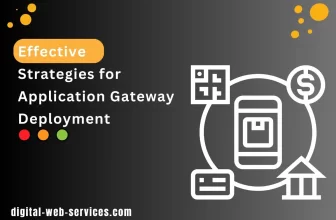
In today’s world, technology has become one of the basic needs of almost all businesses. Digital transformation has become the new norm. Special software and apps are used to check over business growth while tracking the delivery of the product and ensuring customers’ needs. It may sound easy to you, but once you get into it, you will know why most developers end up getting cold feet. If you’re in the same boat and
- Losing plenty of valuable time in creating apps
- Feeling frustrated by rigid systems
- Using brainpower to manual processes
You’re on the wrong track!
Let us guide you on the right route! The major trick you’re missing is low code backend in your business. If you want the lowdown on low code backend, you’re warmly welcome, as I will share a complete low code development guide with you.
What is Low Code App Development?
It’s a substitute for traditional software development practices and a quick yet easy tool to promote digital transformation. Low code platform enables the person to create required apps using a visual drag and drop interface, with minimal coding.
Yes! You heard it right. Its minimal coding requirement gives it the name “low code app development.” So now you don’t need to hire a group of seasoned developers anymore as even non-IT personnel can efficiently generate programs serving your business needs smoothly through adding low code development in their list.
Growth Rate of Low-Code App Development
The global market size of low code app development technologies is valued at $ 13.8 billion in 2021, with a growth rate of 22.7% from 2020 to 2027.
The exponential growth rate of low code app development technology is not surprising. Specifically, the enhanced demand for software applications has made low code app development platforms the main component of the low code app development market.
Low-Code Backends
The most popular low code backends are as follows:
- Back4app
- Firebase
- Backendless
- Heroku
- Kinvey
Features of Low-Code
Low codes are still alien to most people around. In a nutshell, low codes allow you to build and streamline the deployment of apps through abstracting and automating each step of the application.
Low code platforms involve these technologies to boost your speed to the market.
- A visual IDE
- Drag and Drop editor
- Potential to build out integration
- Perform server-side tasks
- Automation and deployment
- Security and scalability
Benefits of Low-Code
Low-code development has emerged to put in the bags to keep up with the accelerating pressure on IT leaders to level up the application delivery time and speed.
Here are the top 3 benefits of low code app development.
ü Swift Development
Low code platforms enable the creation of critical apps 10 times faster than traditional systems.
ü Enhanced Organization
Low code ensures agility, a crucial component for companies that are on the mission of maintaining and improving their market shares even with the ever-changing technological landscape.
ü Lower Cost and High Productivity
It reduces the need for more developers as only one person, even with minimum coding ability, can efficiently generate a complex application in no time.
In Conclusion
In short, low-code app development is the magic bullet in business and software development. It generates apps quickly and efficiently without sacrificing performance and consistency. Adopt this simple low code app development today and see your business rolling high!
Digital Web Services (DWS) is a leading IT company specializing in Software Development, Web Application Development, Website Designing, and Digital Marketing. Here are providing all kinds of services and solutions for the digital transformation of any business and website.










